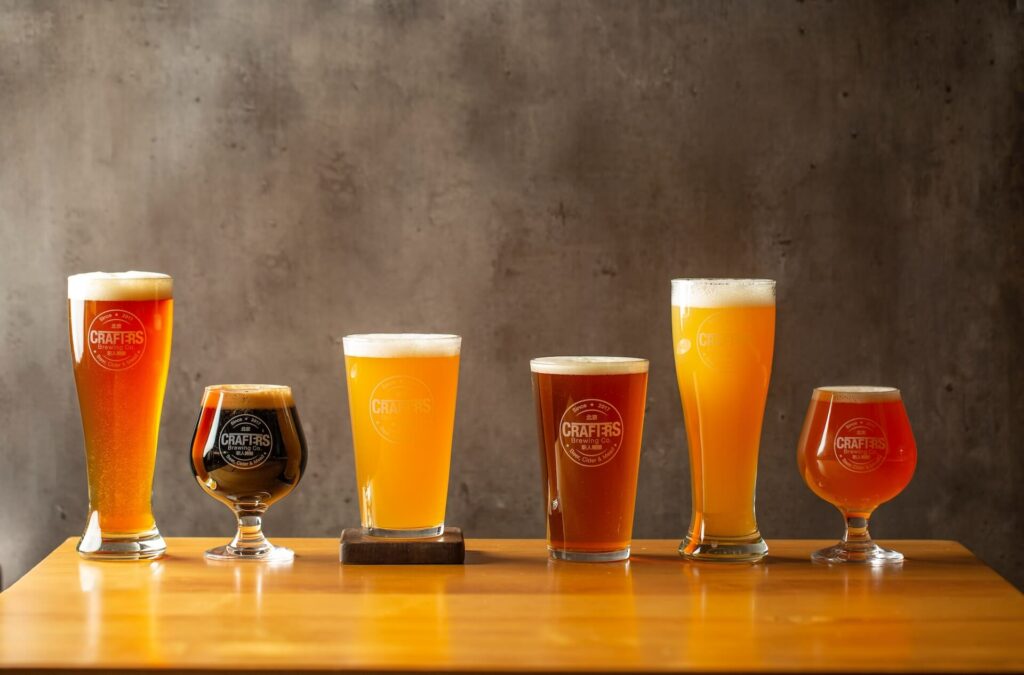When you find a long-forgotten beer in the back of your fridge or stumble upon a dusty bottle with a faded label in your cellar, a common question arises: “Can you drink out-of-date beer?”
Understanding the shelf life of beer and how it impacts its taste and safety is crucial for casual drinkers, connoisseurs, and bartenders.
As bartenders, the last thing we want to do is serve someone out-of-date beer, whether working in an establishment or manning the home bar.
In this post, we’ll look at what happens to beer past its expiration date, how long it takes for beer to expire, and whether it’s safe to drink a beer that’s been sitting around for a while.
Let’s get into it…
Can You Drink Expired Beer?
Yes, you can drink expired beer. Drinking beer is expired beer won’t make you sick, but be prepared for some less-than-pleasant tastes and aromas.
Therefore, if you’re willing to try a beer that might have an unusual taste in the spirit of adventure, feel free to go ahead.
I’ve accidentally drank out-of-date beer once or twice and it’s pretty gross, but if you’ve got the stomach for it then there is no harm done.
The expiration date is primarily a guideline for optimal flavor, not necessarily a measure of safety.
The average adult in the US drinks around 10 ounces of beer daily, which is equivalent to approximately one six-pack per week.
But just like any other product, we often tend to buy more than we need and stock up on those delicious beers, saving them for a sunny day.
This means that if you don’t end up drinking all of your beer, you’re likely going to end up with some that has expired.
Does Beer Have An Expiration Date?
Yep, most beer producers are thoughtful enough to include an expiration date on their products, which can be found either on the packaging or directly on the bottles.
The time frame from when the beer is bottled to when it is considered past its prime varies, depending on several factors including the brewer’s practices, the type of bottle used, and the specific variety of beer.
A key factor in determining a beer’s shelf life is the transparency of its bottle.
Beers bottled in more transparent containers, particularly those in green bottles, often have shorter expiration dates.
This is due to the effect of light exposure on the beer, leading to a process of oxidation. This phenomenon is similar to ‘bottle shock’ in wines, where light exposure can temporarily alter the flavor.
But unlike bottle shock in wines, the flavor degradation in beer caused by light exposure and oxidation is a one-way street.
Once the beer’s taste has started to deteriorate, this process will continue, regardless of whether the beer is later stored in more optimal conditions.
When Does Beer Expire?
At room temperature, beer typically stays good for 5 to 9 months post-expiration, while refrigeration can extend it by 2-3 years.
This rule applies to all forms – bottles, cans, growlers – as long as they’re unopened.
So, if you find forgotten bottles in the back of your fridge, fear not!
Opened beer, however, has a short shelf life of about a day, regardless of the expiration date.
Thankfully, it’s easy to spot if your bottled beer has turned bad. Most beers come stamped with expiration dates, giving you a heads-up.
How Long Does It Take For Beer To Expire?
Many beer producers stamp their bottles with an expiration date, usually ranging from 3 to 9 months after bottling.
That said, it’s important to note that the listed date and the actual onset of flavor loss aren’t synonymous.
When stored properly, beer expires five months after the date on the bottle.
What To Do When Your Beer Goes Bad
Discovering that your beer has gone bad can be a disappointing experience, especially if it’s a brew you’ve been looking forward to enjoying.
But, in almost all cases, sipping that beer won’t harm you. That’s because properly brewed beer results in a low pH level and a considerable alcohol content.
These factors not only contribute to the deliciousness of the beer but also create an environment that’s unfriendly to pesky microorganisms.
So, even if that beer has been sitting on the shelf for years, as long as it’s sealed properly, it’s unlikely to make you sick.
But if you notice your beer has lost all its fizz, it’s a clear indication that the seal was breached at some point. The flavor you’re used to experiencing won’t be remotely close to what you’ll get if you take a sip.
In this case, it’s best to cut your losses and throw the beer away.

Similarly, if a beer that isn’t supposed to be tangy or acidic has a vinegary taste, it’s a red flag that bacteria has found its way in.
While the health risks of drinking beers beyond their listed expiration date are minimal, it’s essential to acknowledge that over time, the beer can lose flavor.
What was once a refreshing treat could, quite literally, become a stinker.
Factors like the impact of ultraviolet light, the brewing process, storage conditions, and whether you’re intentionally aging beer – all play a role in how beer evolves over time.
How To Store Beer Correctly
1. Best-Before Date
Treat the best-before date as a quality guide, not an immediate expiry.
As mentioned earlier, the decline in beer quality occurs gradually after this date, provided it’s stored correctly.
2. Temperature Considerations
- Unopened beer at room temperature remains optimal for 4-6 months before quality degrades.
- Unopened, refrigerated beer maintains peak taste for 6-8 months.
- Keep the beer at its purchased temperature, especially if bought cold.
3. Storing Beer According To Packaging
A. Growlers
Keep upright in cool, dark spaces. Airtight lids ensure freshness for days; CO2-filled growlers extend freshness.
Once opened, consume within 36 hours.
B. Bottles And Cans
Store packaged beer in a cool, dry place. For bottled beer, maintain a temperature between 45-55°F. Bottles should stand upright.
Cans and bottles fare well, just above room temperature or slightly below freezing.
Note that aluminum cans are the best for safeguarding your beer from UV light.
C. Kegs
The clock starts ticking once the keg is filled. So, use untapped kegs sooner and practice first-in, first-out.
Keep them in a cool, dry place away from freezing, and avoid excessive movement to prevent foaming.
Note that draft and packaged beers have longer lifespans compared to homebrews or microbrews.
5. Long-Term Storage Tips
- Cold storage slows aging, and darkness protects from UV rays.
- Correct storage, upright positioning, and temperature control are vital.
- When in doubt, contact the brewery for specific advice.
- Larger containers stay upright to minimize contamination risk.
- Freezing alters taste, so never freeze your beer.
- Beer ages differently than wine; excessive aging can lead to spoilage.
- Store in a cool, dark place, ideally between room temperature and freezing.
Final Words
While out-of-date beer may not offer the optimal taste experience intended by the brewer, it’s generally safe to drink if it hasn’t spoiled.
The key is to understand and recognize the signs of a beer that has gone beyond its prime.
Light exposure, storage conditions, and bottle type all play important roles in determining a beer’s shelf life.
Basically, enjoy beer close to its prime, and when in doubt, trust your senses. If you do end up with skunky beer, try a tiny amount first, and if it shows signs of expiry, it’s best to throw it away.


